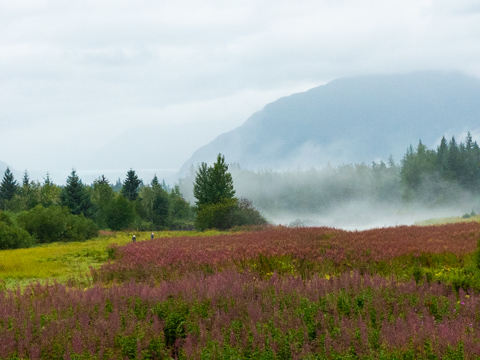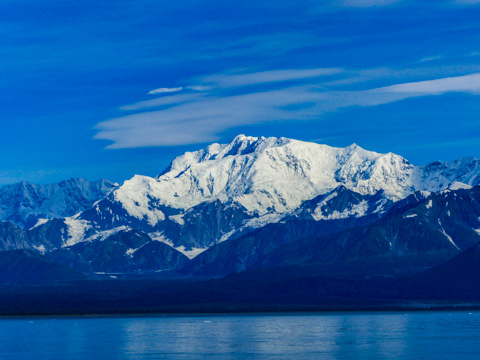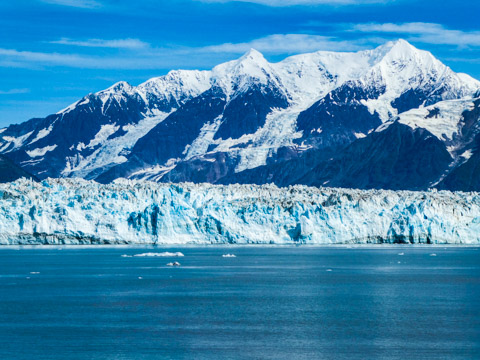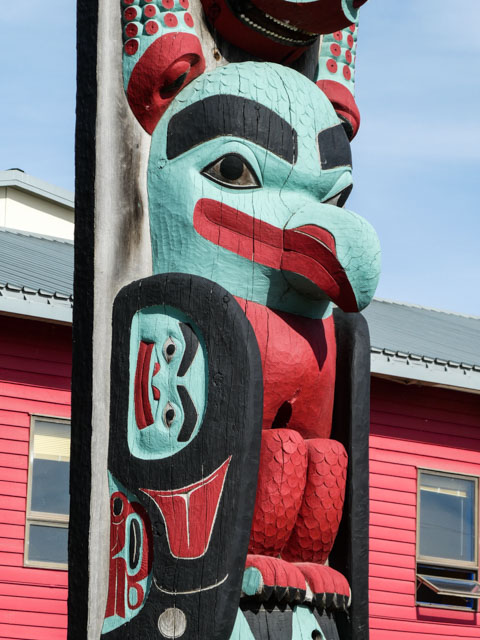We had the best of excursions planned for Juneau, which was a tour by Skip at Gastineau Guides to take us to see whales, glaciers, bears and eagles. Amazingly enough we saw all four and a waterfall.
A shuttle collected a group of us at the Sojourn, everyone with a camera in hand. Among other things, Skip is a photographer and a local cinematographer. The brilliant part of the tour was finding the animals and Skip’s passion for the local wildlife, which he caught from his local high-school biology teacher. Both on the bus and the boat, he had still photos, prepared earlier, to show us what to look for and how to be careful. Alaska can be unforgiving.
One of the best photo tips, was how to be prepared to photograph the whale tale and we had practice with several whales being in the vicinity and learned to spot the hump they do before diving to the bottom to feed.
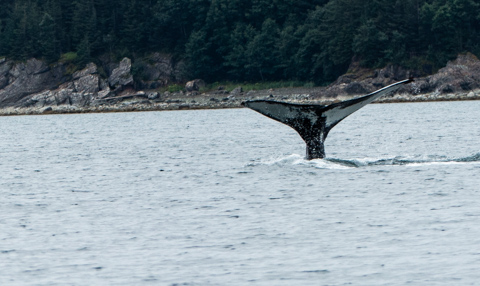
It was raining when we got to the dock, but even before we boarded the boat, an eagle posed for us. Eagles mate for life and like the rest of us start off with a small nest and spend the next 20 years improving and renovating every year. Their nests get bigger and bigger. One winter a tree crashed down and with it the huge eagle’s nest. What they found in the middle were several cat and dog collars. Not a great image for the majestic bald eagle.
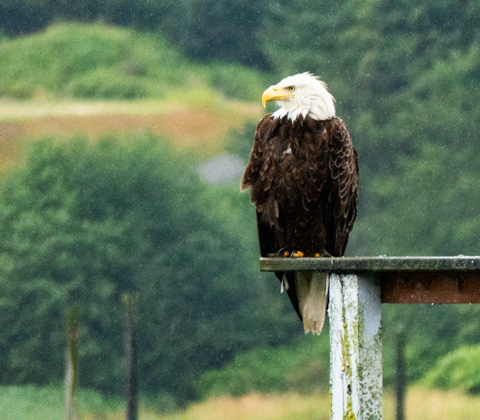
After spotting whales in a few different spots in the harbor, we left the boat and we were back in the shuttle for the trip to Mendenhall Glacier. Mendenhall Glacier has been retreating since the mid 1700’s and as we walked into the park, we could see signs showing where the glacier was in 1910 and 1917 and so on. There is a torrential waterfall near the glacier, booming down the side of the hill, filling the lake with last year’s snow melt.

As we walked through the park we saw elderberries, fungi, mushrooms and bear scat. We also saw the remains of the bear’s salmon dinner. Skip advised us that Mama bear would have caught the salmon bit it’s head off for a favourite appetizer of brains and then eat the roe in the belly. The cubs would need protein and they would get the rest of the salmon so they could build muscle.
We walked around the corner and we found Mama and two baby cubs, snoozing underneath a Spruce Tree. Even though we were making plenty of noise, Mama bear continued to sleep. Skip explains this phenomenon – there are so many people in the park, male bears will stay away and she doesn’t have to worry about the safety of her cubs. Rather gruesomely, males might kill the cubs, so the female will come back into heat. With cubs, she is off the market for three to five years.
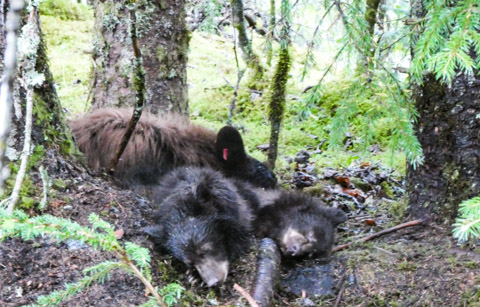
There is a wonderful meadow lined with spruces and hemlocks and full of fireweed. You can see clouds and fog spilling down off the glacier and the hills. Just remember to call out ‘Hey Bear!’, so you don’t surprise them.
